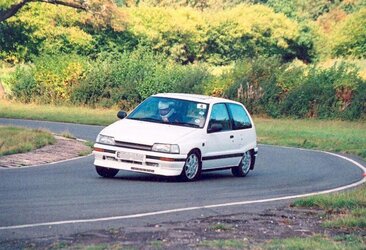Grizzly
Well-Known Member
- Location
- East Kilbride
Who dips the clutch when braking,
As soon as the vehicle starts to slide you should dip the clutch and don't touch the brake, this allows each wheel to turn indepedently from each other. The problem in a skid/slide is that your road wheels are rotating across the road surface at a different speed from the vehicle that is moving across the road surface (I'm sure someone will give a better definition), dip the clutch, leave the brakes and turn into the skid and the wheels will regain their grip. If braking in a straight line it is best to lot the engine do as much of the braking as possible, reduce speed early, use the appropriate gear and match the engine revs to the gearbox speed as you change down to reduce the chance of the wheels locking as you re-engage the clutch. In short, be light with all the pedals and keep your momentum up, that way you may even get up a hill.
If this country does not sort out its driving standards then in 10 years we are stuffed, we'll see the roads coming to a halt because of the rain.




